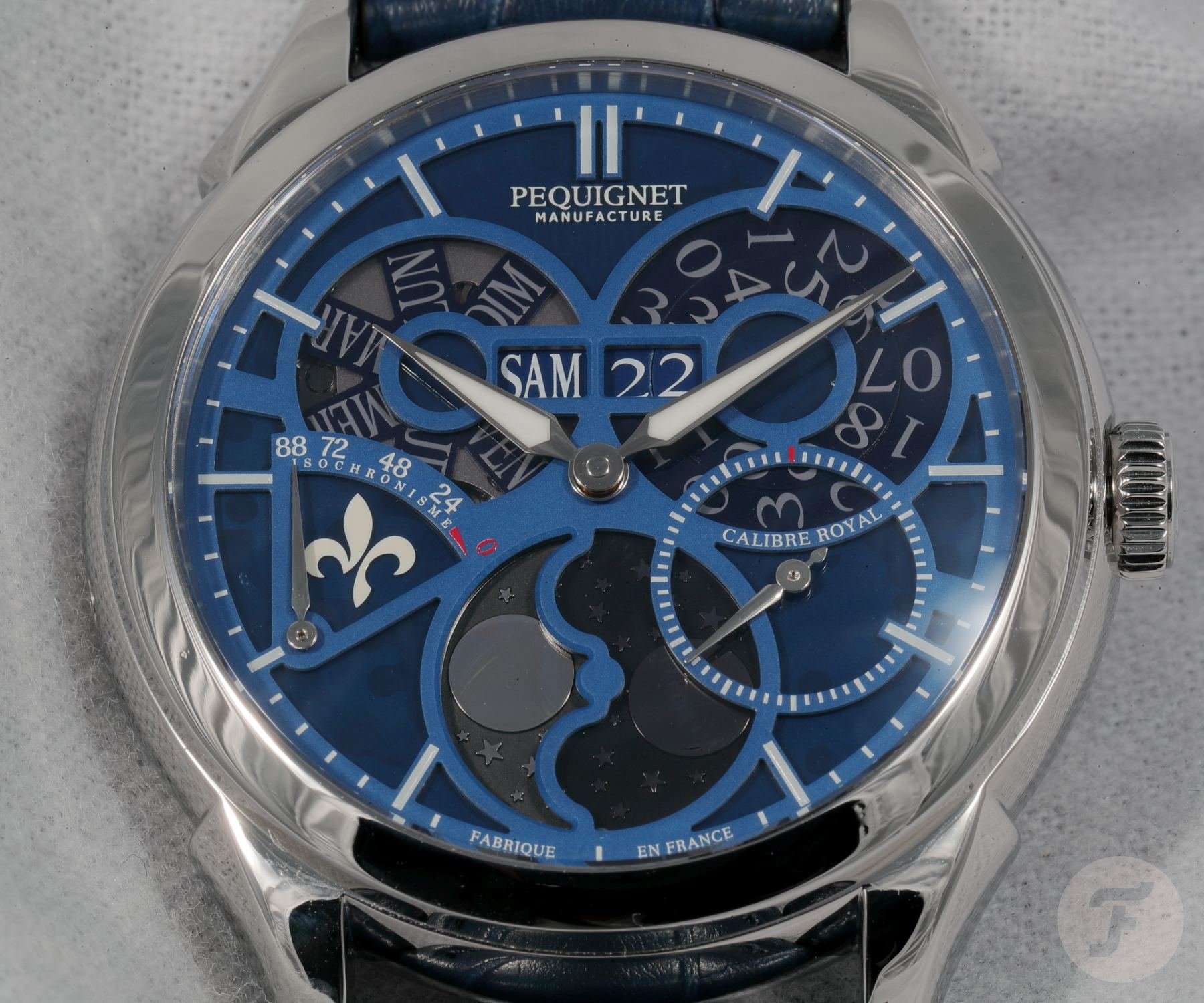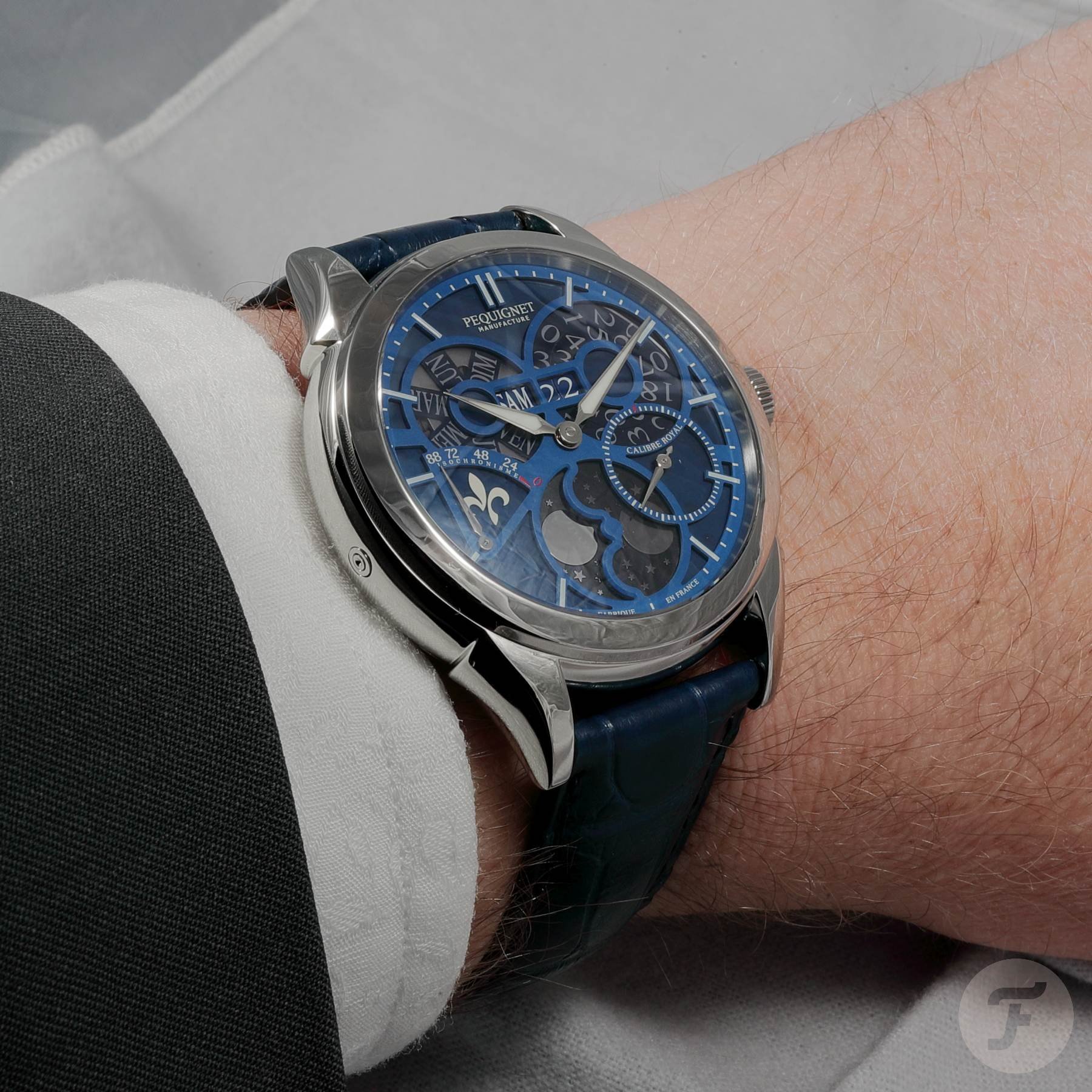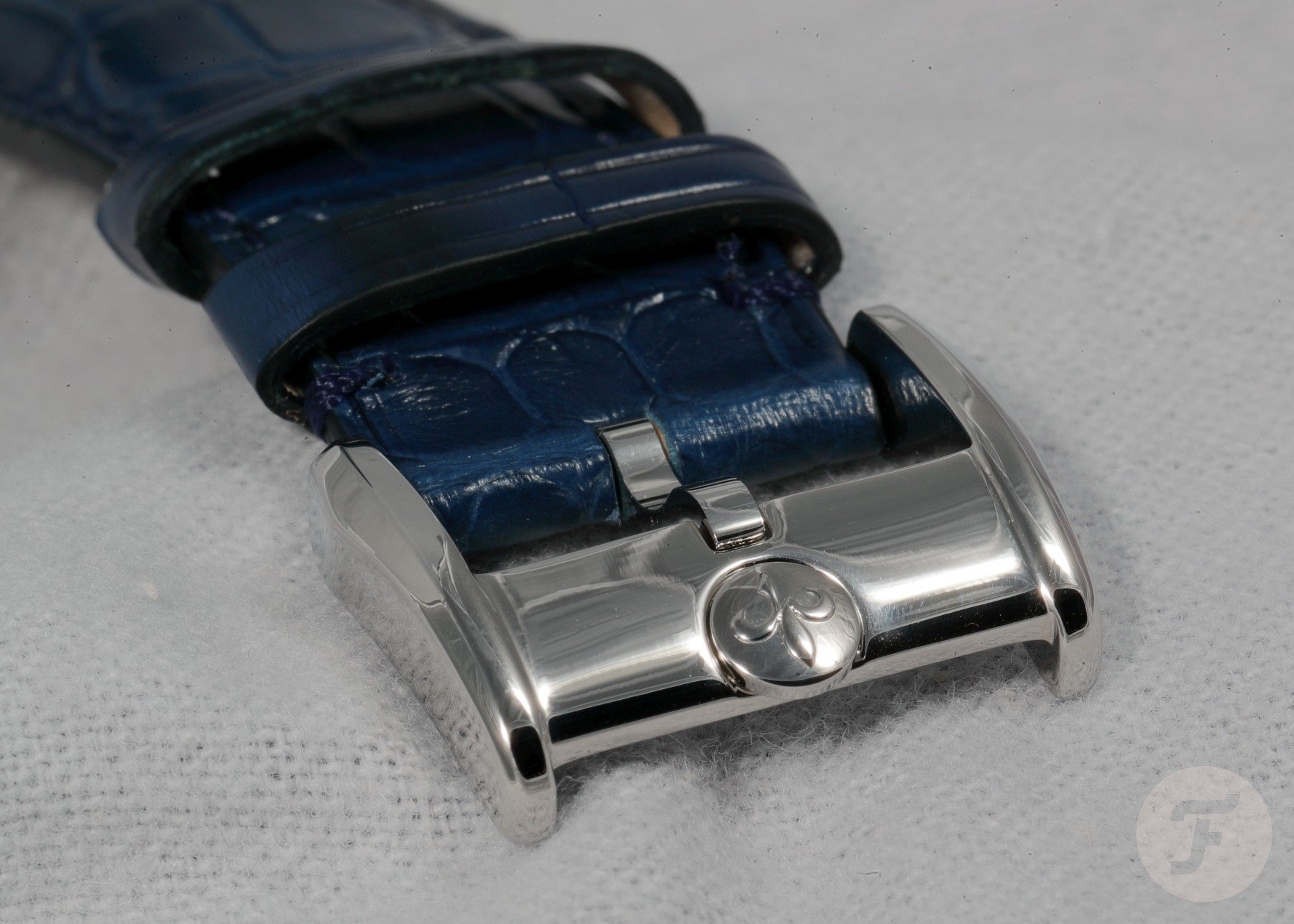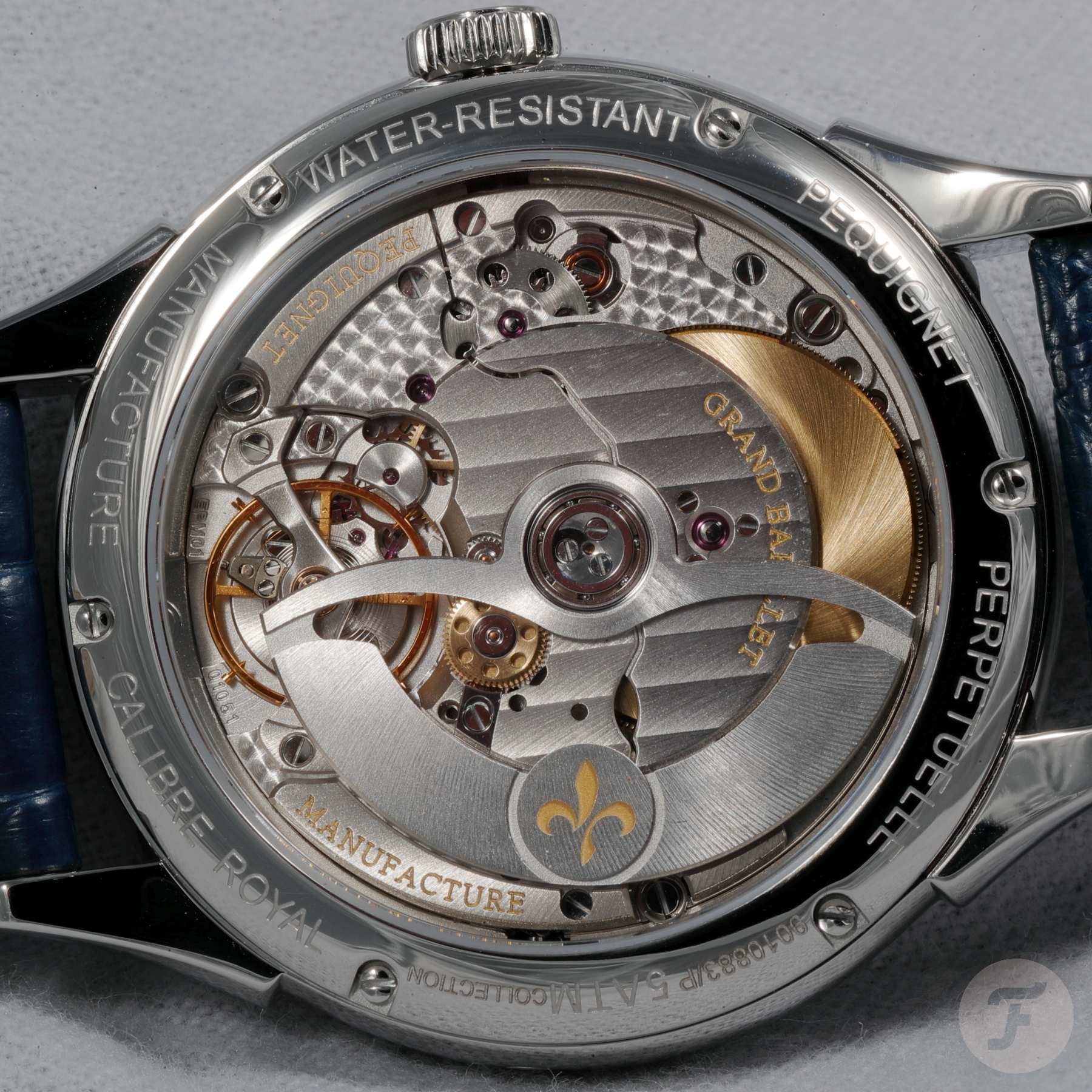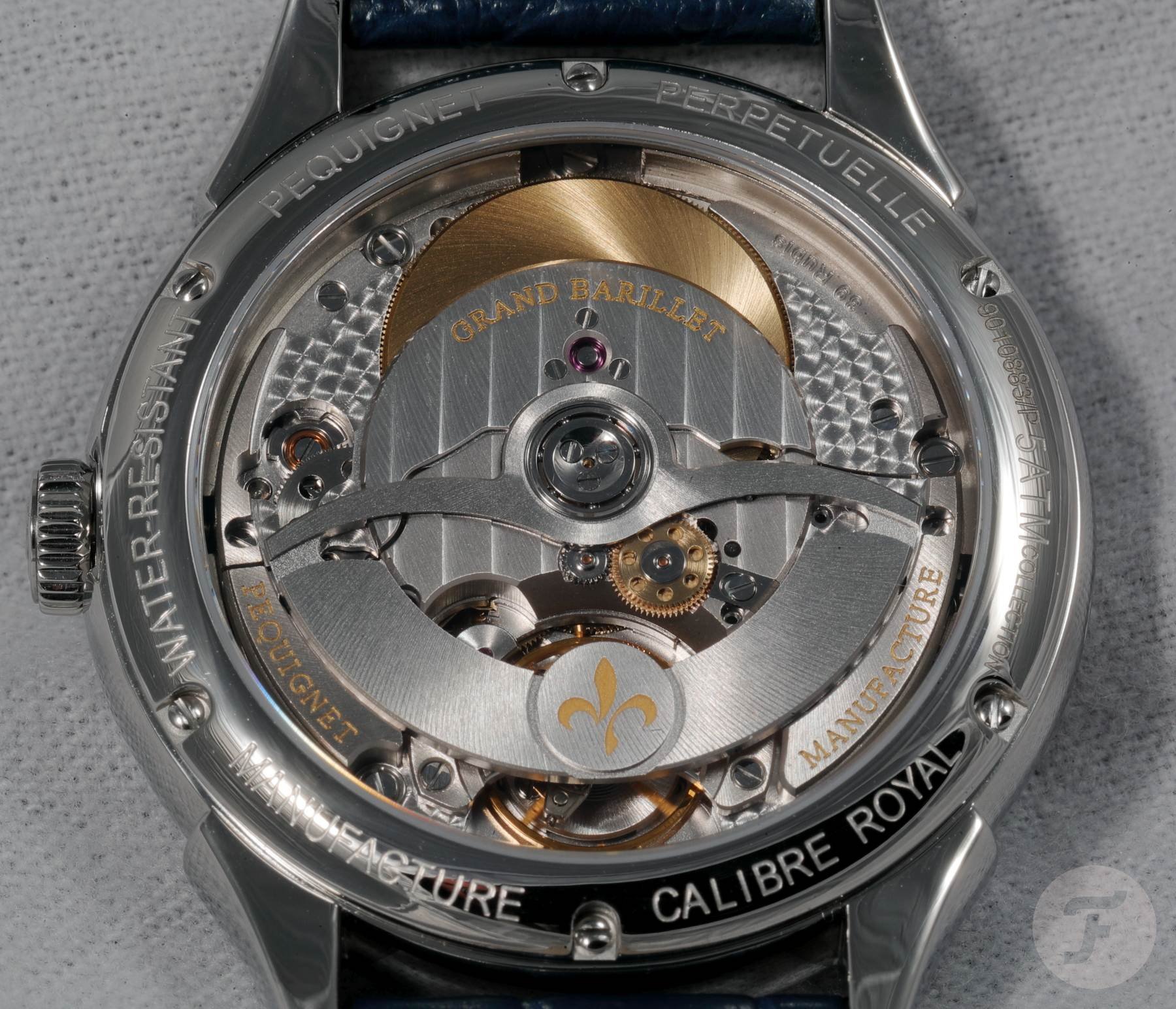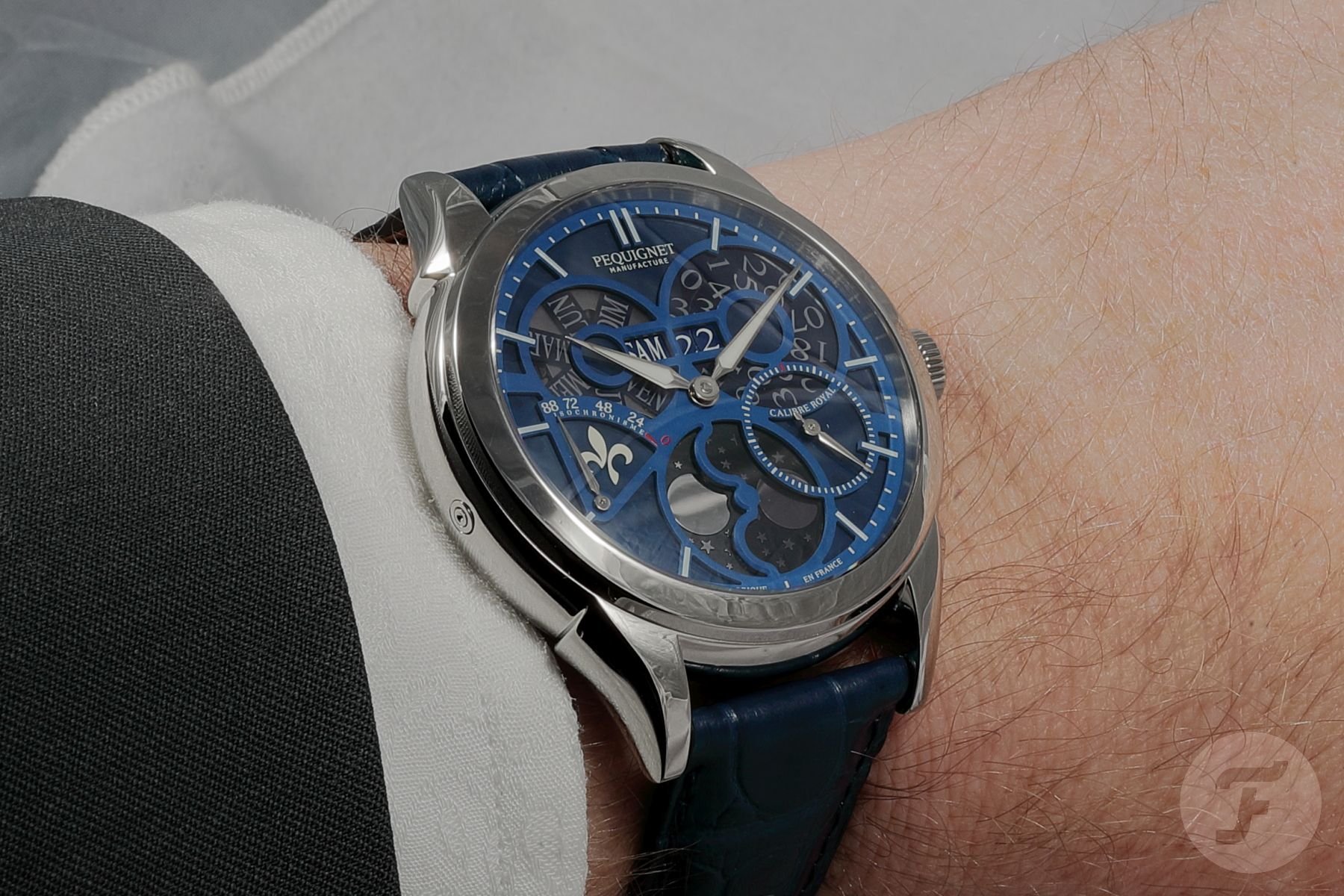Made In France: Pequignet Royale Saphir Bleue
Last October, I had my first encounter with the French brand Pequignet. I had come across this brand name before when fellow collectors mentioned it as an insider’s tip for advanced in-house watchmaking at attractive prices. You rarely stumble upon anything written about this brand or its watches, which was reason enough to make me curious.
Pequignet is located in Morteau, a French village near the Swiss border and not far from Le Locle. Founded in 1973, the brand has had a bit of a checkered history. It now offers a broad range of watches and even some jewelry. Among Pequignet’s offerings are elegant ladies’ watches with quartz movements and more masculine models in both elegant and sporty designs with automatic movements. There is even a dive watch in the brand’s lineup.
In 2011, Pequignet presented the first watch with its Calibre Royal. The base caliber already provides a big date, a weekday indication, a power reserve indicator, and small seconds at 4 o’clock. It was designed entirely by Pequignet and is assembled fully in-house. The majority of the movement’s parts come from French suppliers, and the brand is continuously increasing this portion. The Manufacture family of watches based on different executions of the Calibre Royal and the Calibre Initial, a simplified version of the Calibre Royal, is Pequignet’s current focus. The brand’s flagship model is the Royale Saphir, which I will explore in this hands-on review.
A complex dial
Pequignet’s Royale Saphir boasts all the complications that the Calibre Royal offers plus a moonphase indicator. The dial appears a lot busier than it would need to because it reveals the complete discs of its weekday, big date, and moonphase indications through the eponymous sapphire dial. This design reminds me of the Lumen models from A. Lange & Söhne. The vertical orientation of the moonphase display is unusual, but it actually shows the crescent in a more familiar view. The fleur-de-lis logo inside the power reserve indicator may be a bit too prominent, but it visually balances the small seconds.
The hour and minute hands, as well as the hour indexes, feature luminous material that glows blue in the dark. This enhances readability at night, but it also impairs the sophistication of this dial. On the other hand, it makes this watch appear less strict. I would prefer it without lume, but this is a personal preference. Altogether, this dial presents a technical but also elegant sight. The complexity exudes powerful watchmaking capability, which is no empty promise, as we will see later.
A decent case with extraordinary lugs
With a diameter of 42mm and a thickness of 12.3mm, the Royale Saphir’s case is by no means small. Even for my 18.5cm (~7.3″) wrist, this watch is a bit big, as you can see in the wrist shots, but it wasn’t uncomfortable to wear.
The case has a fully polished finish, which makes an elegant impression. The bezel is wide enough to frame the complex dial appropriately. The pusher integrated into the left side of the case advances the moonphase indication.
The lugs are a modern interpretation of cornes de vache (“cow horn”) lugs, and their outer faces have a dynamically flowing shape. At the end at which they connect to the case, those outer faces are convex, while at the other end, they are concave. That is typical for cornes de vache lugs, but here, this shape is more restrained, making these lugs less obtrusive.
The Royale Saphir Bleue comes on a blue alligator strap with a pin buckle. That buckle with the brand’s fleur-de-lis logo appears pretty substantial. This way, it matches the robust case. Beyond that, the outer sides of the buckle resemble the lug’s shape, flowing from convex to concave. I really like this attention to detail.
Calibre Royal EPM 01
Calling a watch movement the “royal caliber” seems rather self-assured, but this movement does indeed offer some impressive characteristics. Its appealing look is achieved through several different types of decorative grinding. The edges of all plates and bridges are chamfered and polished. The winding rotor, mounted on ball bearings, has a unique and attractive shape and carries the brand logo. It also winds the movement in both directions. Notice that the rotor is placed slightly off-center toward the 12 o’clock position.
The most prominent part is the large single barrel. That barrel can provide a power reserve of 88 hours at a frequency of 21,600vph (3Hz). What is remarkable about the Calibre Royal is that the calendar and moonphase indications switch instantaneously, precisely at midnight. Achieving such an immediate switch of indications requires a lot of energy. A chronometer certification guarantees that this high amount of energy is evenly distributed along the entire power reserve.
Overall impression
The Royale Saphir retails for €9,900 / US$9,900. That is not cheap, but for this combination of complications driven by an impressive in-house-developed movement, it isn’t expensive either. The Royale Saphir is large, which might seem like a drawback regarding the current trend for smaller watches. But this watch has got nothing to hide, and there are still watch enthusiasts with larger wrists for whom it could be the ideal choice. The brand Pequignet and the Royale Saphir model are clearly off the beaten track, and that is their strength. This brand definitely is no microbrand, yet it still is highly individual.
Alongside the blue variant that I’ve presented in this review, the Royale Saphir is also available as a limited edition in black with the opaque details of the dial in matte steel. There also is a limited edition in black with a rose gold case and rose gold accents. This year, Pequignet will be exhibiting at Watches and Wonders to present the Royale Saphir in several new colorways.
Explore Pequignet’s homepage to find out more about this brand, and let us know what you think in the comments.

